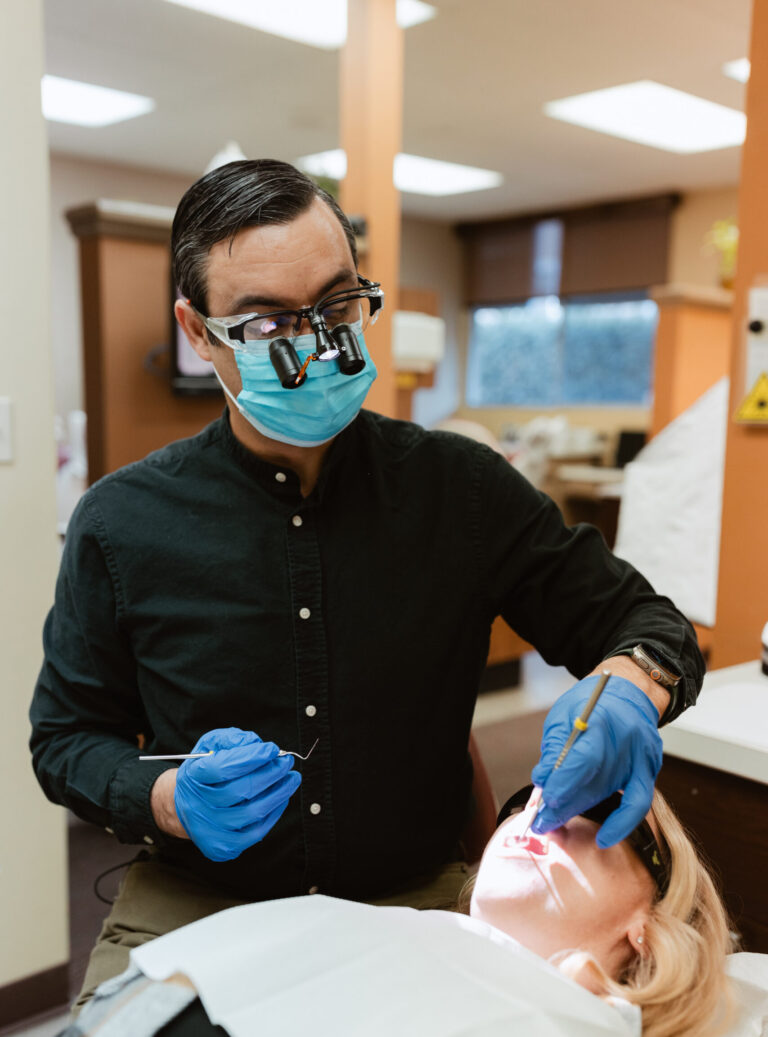Dental Cleanings & Check Ups
We provide complete cleanings and detailed oral exams to support your families lifelong dental health.

Dental Exam & Cleaning
- 90 minutes or less
Regular dental cleaning and oral exams are extremely important for your overall health. Gum disease, also known as periodontal disease or periodontitis, has been linked to heart disease, dementia, diabetes, rheumatoid arthritis and premature birth, so it’s important to catch any oral-health issues before they become problems. Generally, you’ll want to have your teeth cleaned and examined at least twice a year (every six months).
Dental Cleaning
Prophylaxis, commonly known simply as dental cleaning, makes sure your teeth and gums are clean. Our hygienists perform this service gently for your comfort and thoroughly for your health.
Cleaning is extremely important as it keeps your mouth and teeth healthy. Dental cleaning is vital to preventing gingivitis, gum disease, tooth decay or loss and more. During a cleaning, your hygienist will:
- Take x-rays (if necessary): We usually take bite-wing x-rays once a year and do a full-mouth x-ray every three to five years. We may recommend additional x-rays depending on your needs.
- Remove plaque: Plaque, a sticky combination of saliva, food particles and fluids, contains bacteria and coats teeth. Plaque can be found above and below the gum line.
- Remove tartar: When plaque hardens, it becomes tartar. Officially called calculus, tartar forms when plaque is left on a tooth for too long. Because It firmly attaches to teeth above and below the gum line, we need special dental tools to remove it.
- Polish your teeth: Polishing will get rid of any missed plaque while removing stains and brightening your smile.
- Floss: Flossing ensures nothing between your teeth was missed. It’s also a good refresher for proper technique.
- Give advice: If we notice something, whether teeth you tend to miss while brushing, or you’re brushing too hard, or if we see anything else, we’ll mention it to help you have the best oral care at home as well as when you visit.
Dental Exam
Following your cleaning, Dr. Sabaté will do a thorough exam, during which you can expect:
- X-rays review: We’ll tell you what we see and discuss any concerns or treatment needs.
- Oral cancer screening: We’ll check your face, neck, lips, tongue, throat, tissue and gums.
- Gum disease evaluation: We’ll check for signs of periodontal disease in the bones around your teeth and your gums.
- Tooth decay evaluation: We’ll check each tooth for signs of decay.
- Existing restorations exam: We’ll make sure all your current fillings, crowns, bridges and more are in good condition.
Comfortable Exams
We know some people don’t look forward to a dental visit, but we do everything we can to make sure you’re comfortable. If you or your child are nervous or are otherwise uncomfortable, we can help. Blankets and anesthesia are just a few of the ways we can help you relax. Let us know and we’ll be happy to discuss.
Dental Exam & Cleaning FAQs
When your gum tissue doesn’t wrap tightly around each tooth, we may need to consider a deeper cleaning called scaling or root planing. We check your gum tissue by measuring from the top of the gumline to where the tissue attaches to the tooth. We like to see this measurement range from 1-3 millimeters. If we see a measurement of 4 mm or more, it could mean food can get trapped, tartar buildup can increase and other problems. In that case, we’ll likely recommend scaling and/or root planing.
Scaling goes above and below the gumline to remove all plaque, tartar and bacteria. It’s an extreme deep cleaning and the most common non-surgical method for treating gum disease. Root planing smooths any rough spots on your roots, making it much harder for tartar and bacteria to stick.
Both procedures are usually done over the course of two visits, focusing on a different area of the mouth each time. Local anesthesia numbs the gums and roots and you’ll experience minimal discomfort, although there may be tenderness and mild bleeding following the procedures.
Most of the time, these scaling and root planing succeed, with your gums reattaching to your teeth within the healthy range. We’ll confirm this at your follow-up visit. In the unlikely event your gums don’t respond well, there are other treatments we can discuss or refer you to a periodontist.
X-rays can save your teeth. X-rays detect issues that can’t be seen by human eyes, as well as confirm or deny anything your dentist may see during an examination. When you catch potential issues before they’re big problems, you save time, money and—it’s worth repeating—your teeth.
Dental x-rays can uncover a number of things, including:
- Abscesses or cysts
- Bone loss
- Cancerous and non-cancerous tumors
- Decay between teeth
- Developmental abnormalities
- Poor tooth and root positions
- Problems inside a tooth
- Issues below the gum line
The radiation exposure of digital x-rays is that the radiation exposure is much less than your average daily exposure. That is, the radiation is minimal. We also put a lead vest on you to further limit your exposure.
Digital x-rays can be taken quickly and are done at the beginning of your appointment, allowing us to review them with you and talk about any concerns or potential treatment.
Both the American Dental Association (ADA) and American Association of Pediatric Dentistry (AAPD) recommend a child see a dentist no later than age one or within six months of the first tooth. We welcome patients of all ages.
We’re Ready to Help You
At Cajon Dental, everything we do is centered on you, your health and your experience.